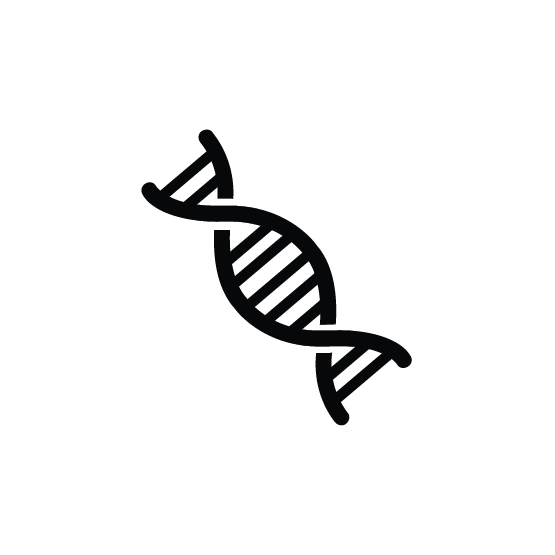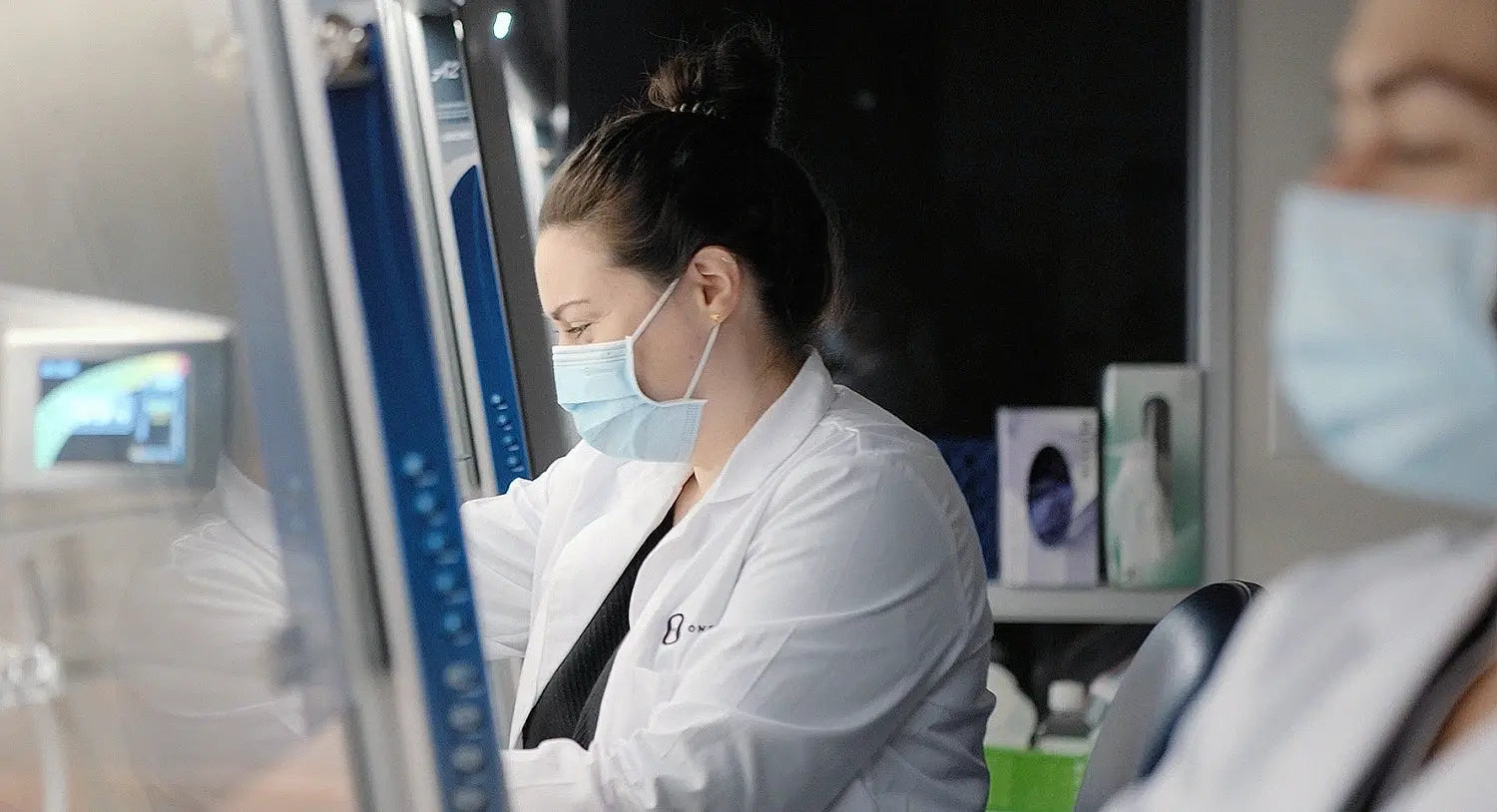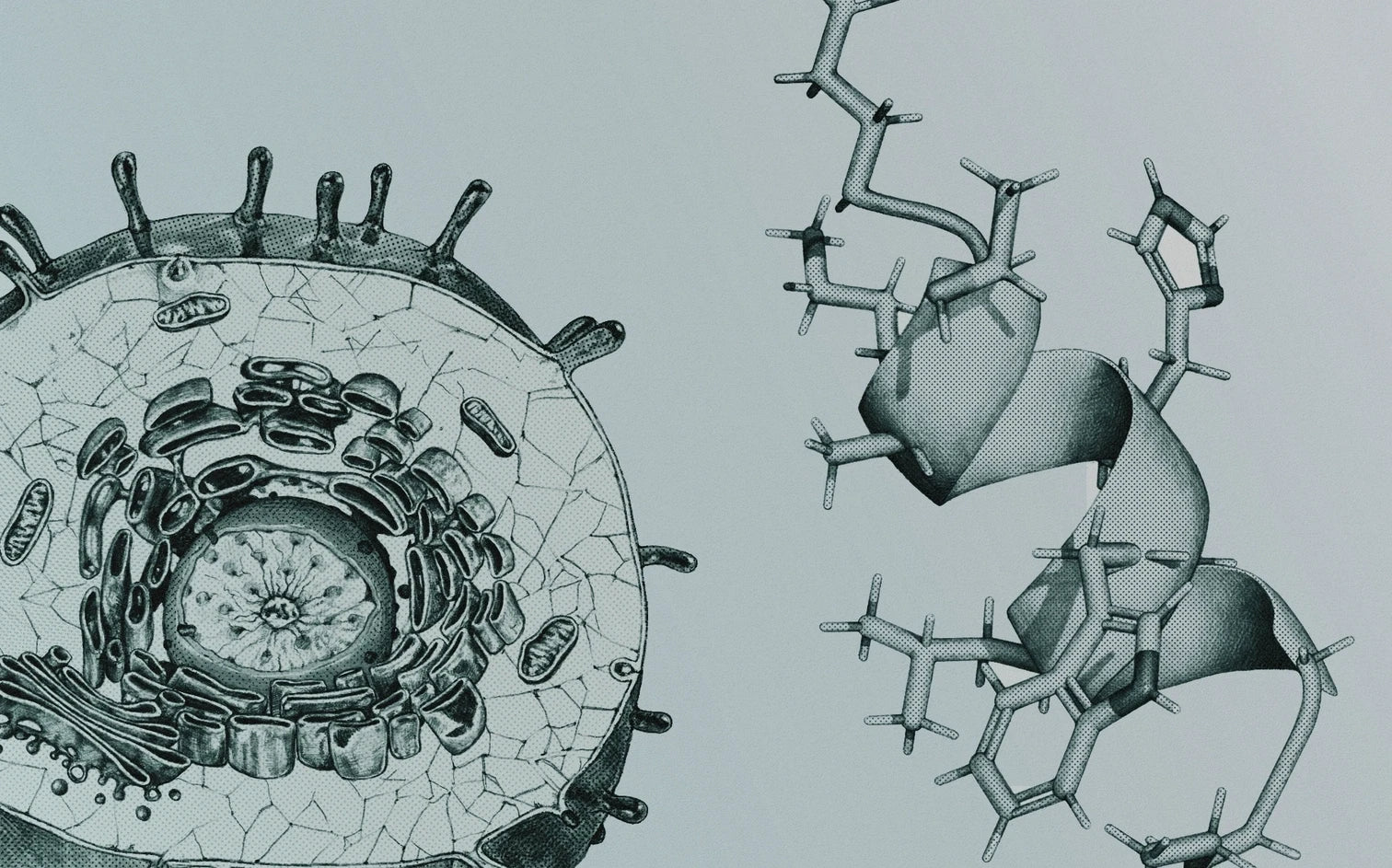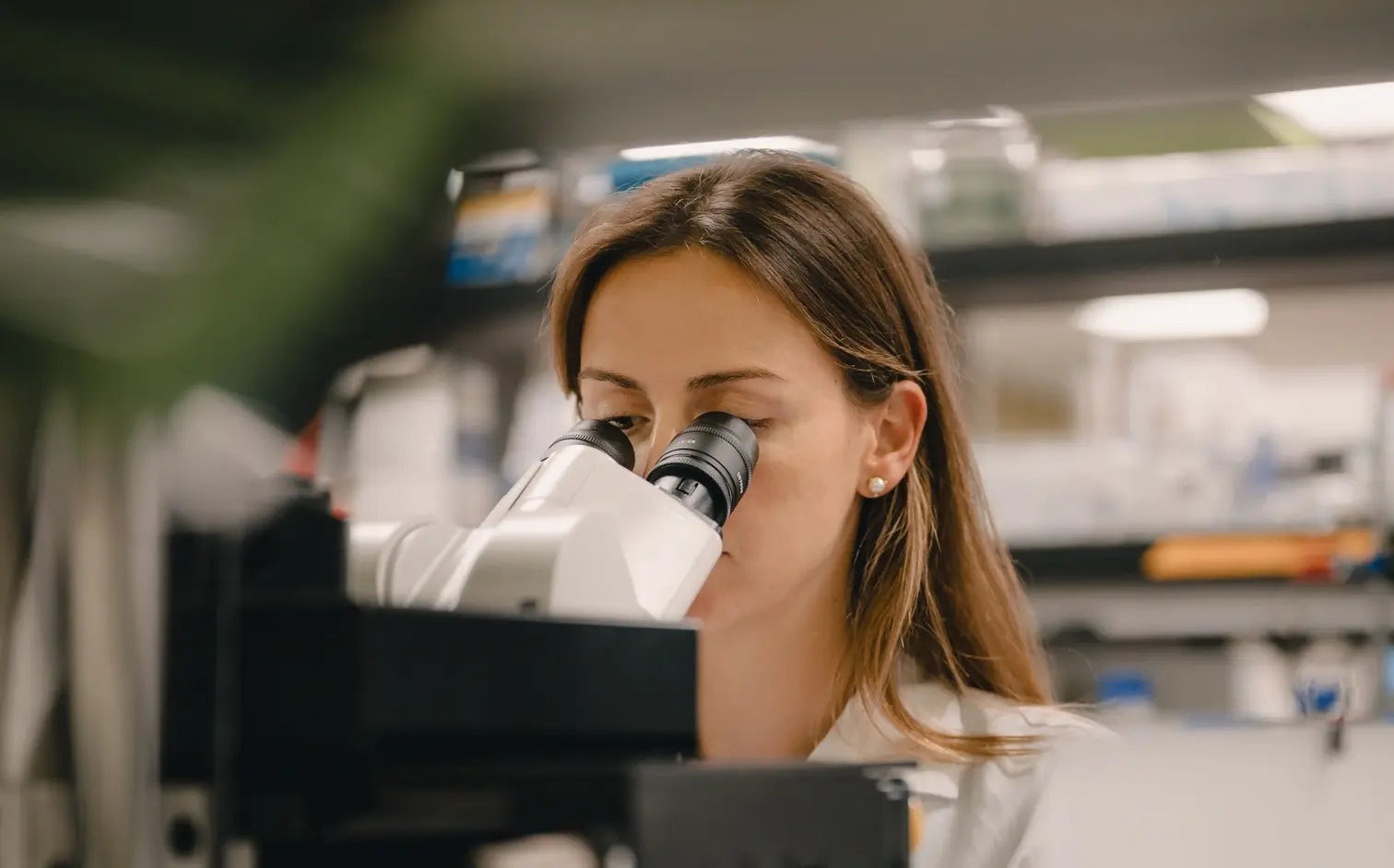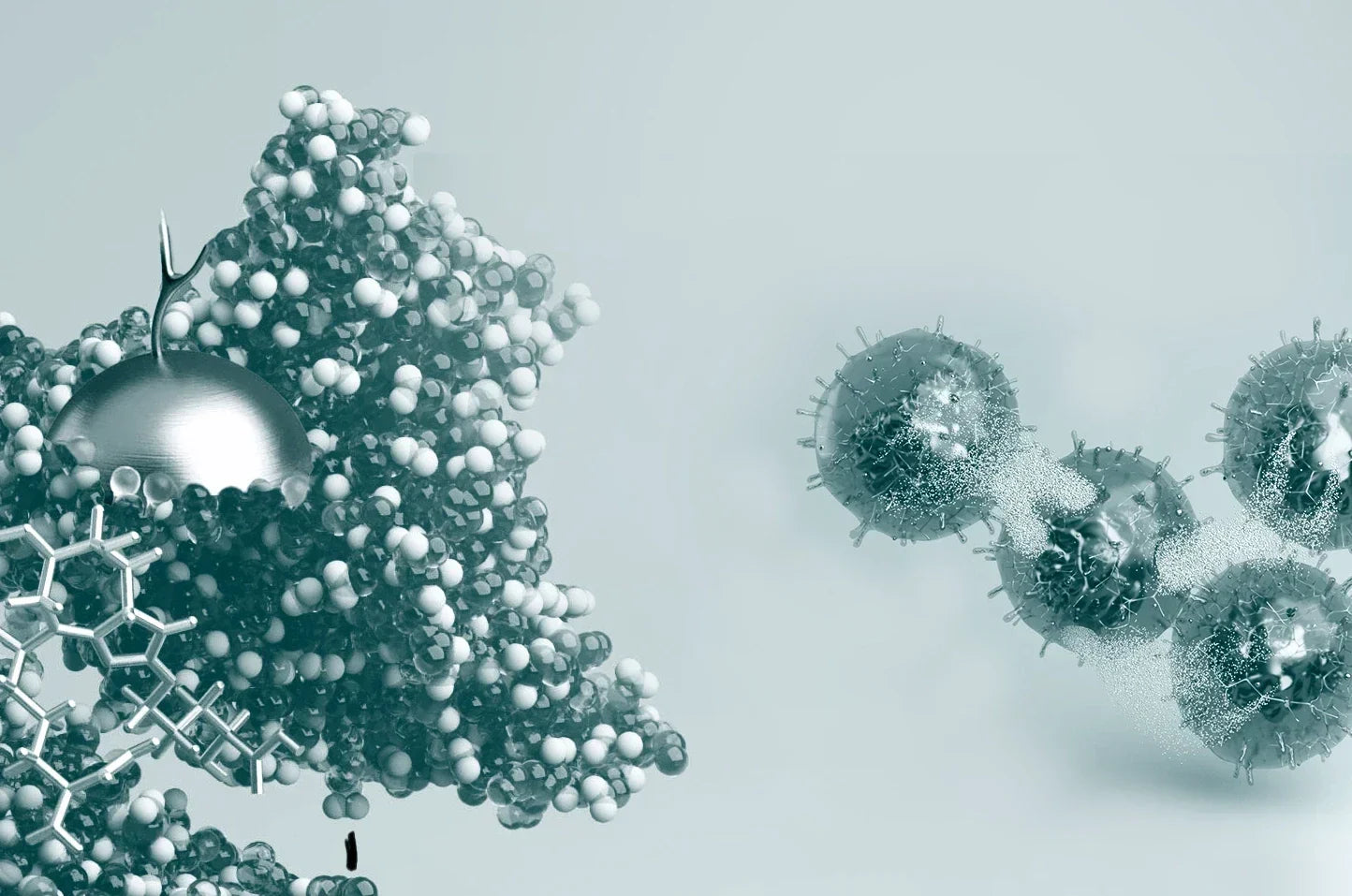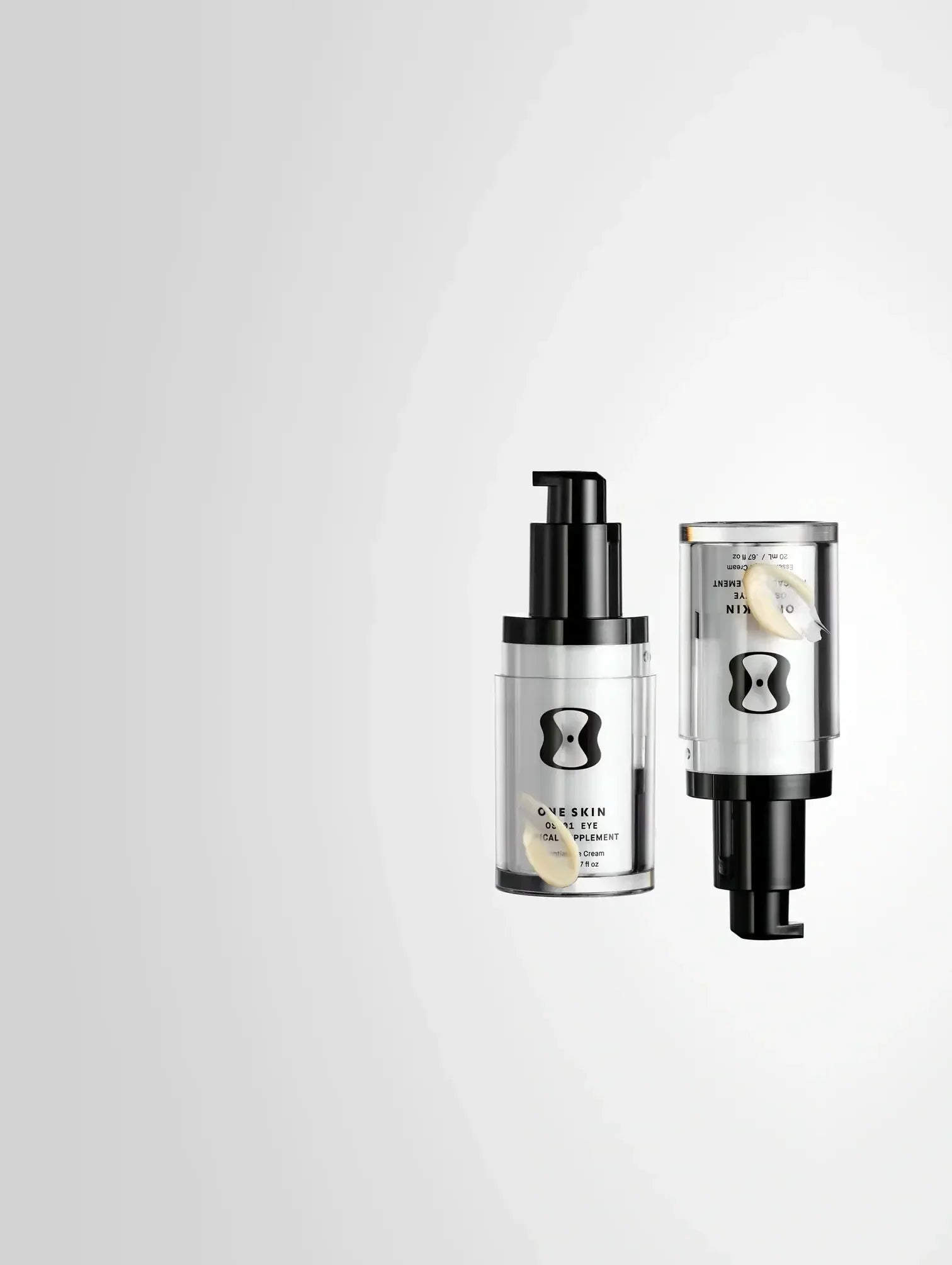Discover the science behind OS-01
OS-01 is the first peptide proven to reduce cellular senescence, a key driver of aging in the skin and hair.01-03
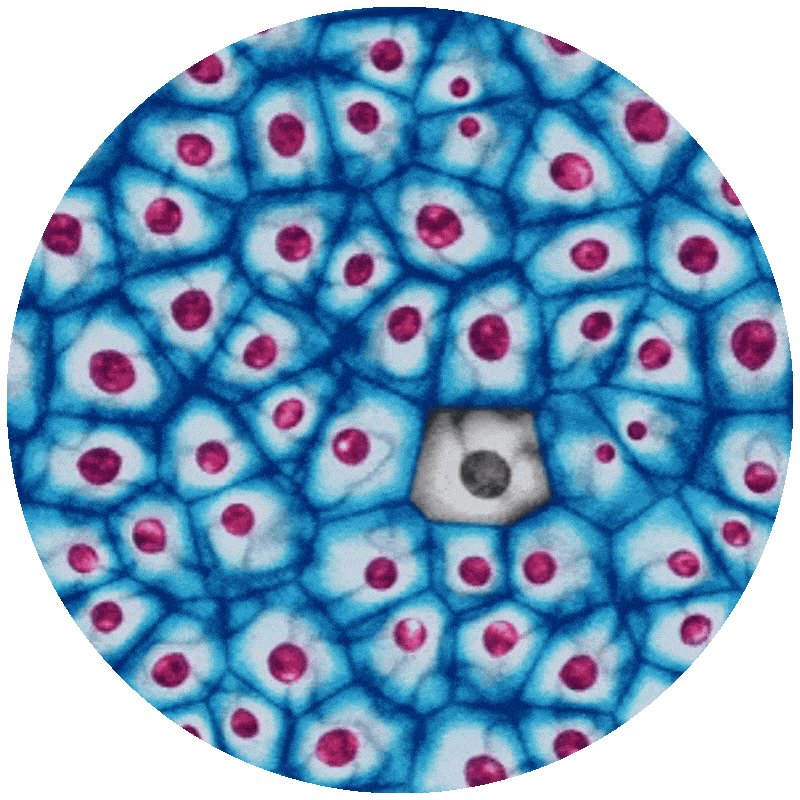
WHAT CAUSES AGING?
A main culprit: cellular senescence
With age and exposure to environmental stressors, some cells enter a dysfunctional state known as senescence.04
Often called “zombie cells,” these cells release inflammatory factors that trigger nearby healthy cells to become senescent. As the body becomes less efficient at clearing them out, their buildup leads to:04

Increased Inflammation

Suppressed Immune Function
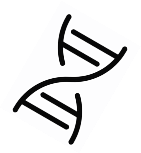
Accelerated aging
HALLMARKS OF AGING04
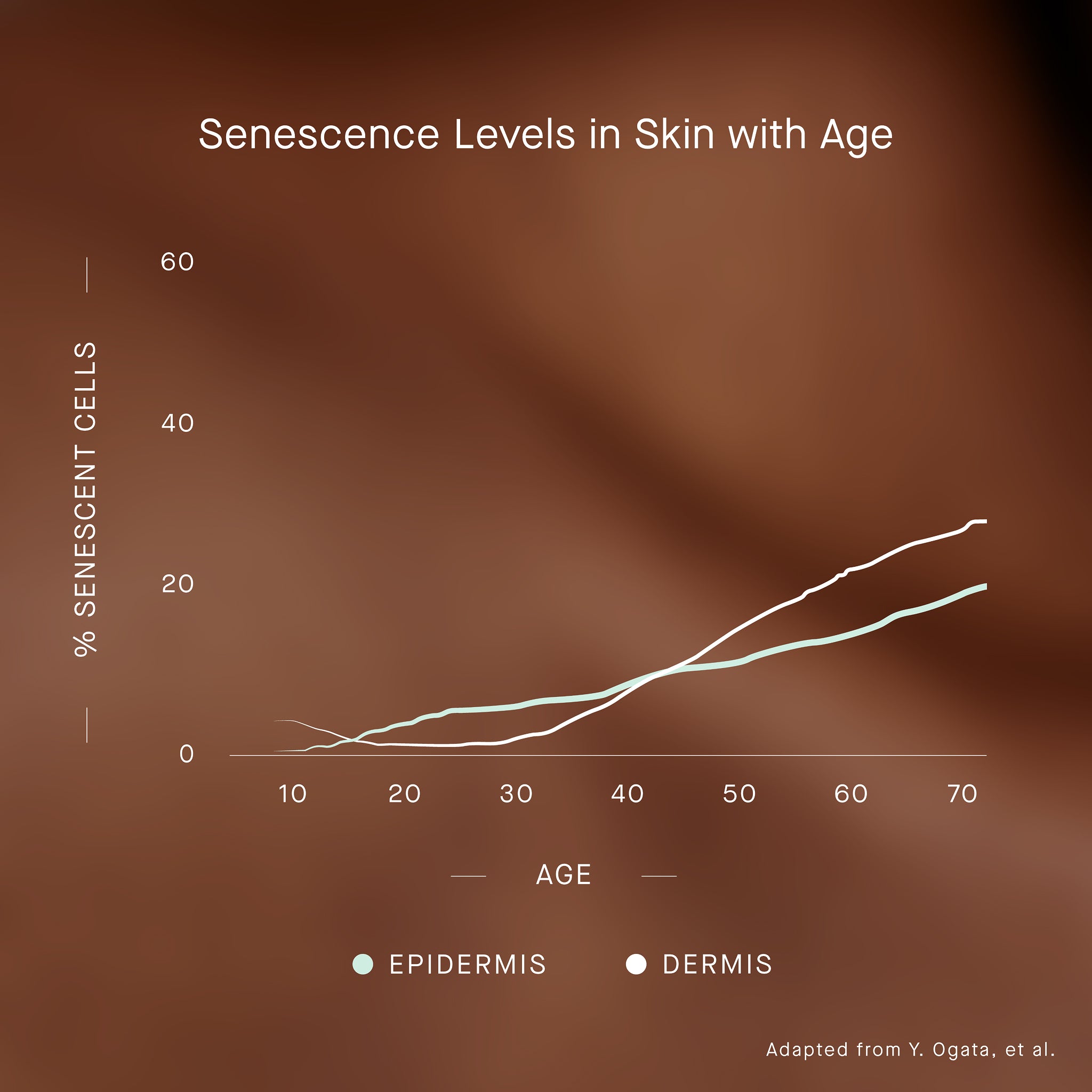
The more senescent cells you have, the older your skin behaves
Starting as early as your 20s, senescent cells build up in your skin05—including your scalp—and contribute to visible signs of aging like wrinkles, crepiness, hair thinning, hair loss, and greying.01-03
- Reduced production of collagen, elastin, and hyaluronic acid06
- Decreased epidermal thickness06
- Compromised barrier function06
- Less elasticity & strength06
- Hair follicle atrophy07
THE SOLUTION
Target skin aging at the source with OS-01
Our patented OS-01 peptide prevents the accumulation of senescent cells, reducing the spread of these dysfunctional cells in the skin.01 The result? Healthier, more vibrant skin and hair that looks, feels, and acts younger for longer.08,09
THE DATA
Lasting benefits start at the cellular level
Backed by groundbreaking data, OS-01 is proven to:
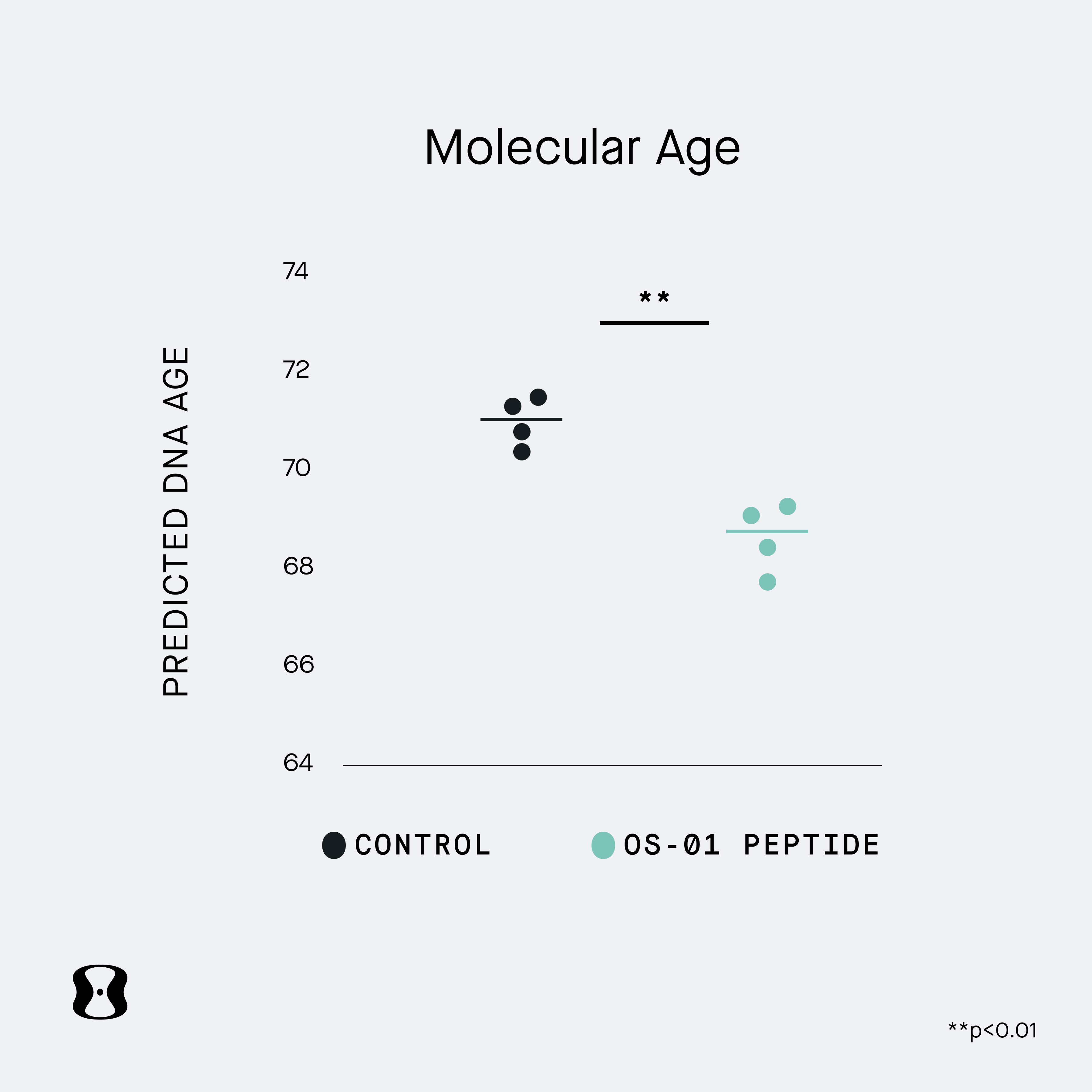
Reduce biological age by -2.5 years01,10
Measured in lab studies on human skin samples using MolClock, OneSkin’s proprietary algorithm that predicts skin’s biological age. Skin treated with the OS-01 peptide displayed a significant decrease in skin’s biological age compared to skin with no treatment. (Zonari, A., et al. npj Aging, 2023) (Boroni, M. et al. Clinical Epigenetics, 2020) Note: In npj Aging publication,"Pep 14" = OS-01 peptide
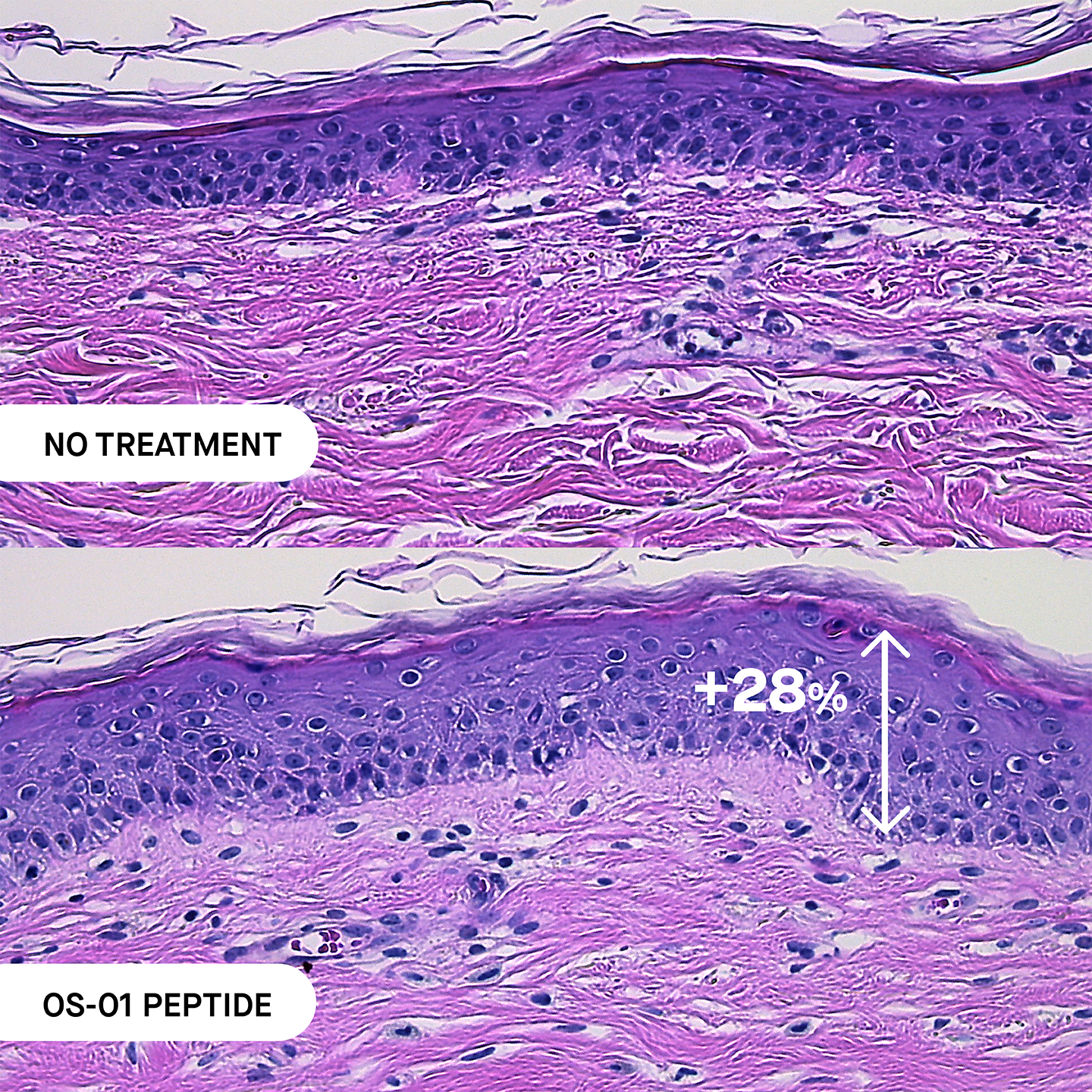
Increase epidermal thickness by up to +28%01
Shown in lab studies on human skin samples by measuring epidermal thickness of histology images. Skin treated with the OS-01 peptide displayed a significant increase compared to skin with no treatment. (Zonari, A., et al. npj Aging, 2023) Increase of +28% was measured on human skin sample from a 55 year old donor treated with the OS-01 peptide. Data was measured in triplicate. Note: In npj Aging publication,"Pep 14" = OS-01 peptide
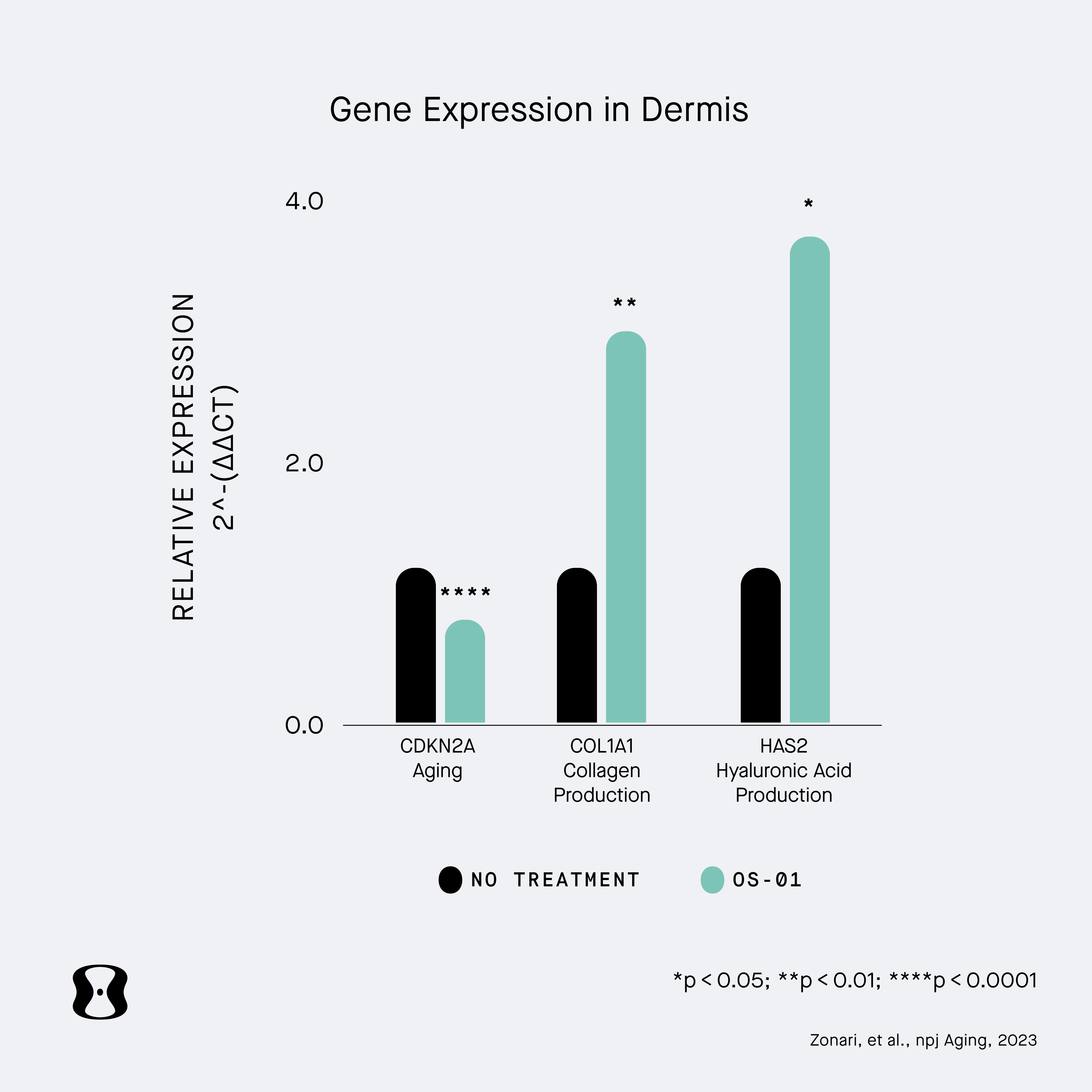
Decrease a key aging biomarker and increase collagen & hyaluronic acid production biomarkers01
Shown in lab studies on human skin samples by measuring key aging biomarker, CDKN2A, collagen production biomarker, COL1A1, and hyaluronic acid production biomarker, HAS2. Skin treated with the OS-01 peptide displayed a significant decrease in CDKN2A, and increases in COL1A1 and HAS2 in the dermis compared to skin with no treatment. (Zonari, A., et al. npj Aging, 2023) Note: In npj Aging publication,"Pep 14" = OS-01 peptide
The Reference Lab
Citations
01 Zonari, A., et al. Senotherapeutic peptide treatment reduces biological age and senescence burden in human skin models. npj Aging, 9(1), 1-15. 2023. doi:10.1038/s41514-023-00109-1
02 Mirmirani, Paradi., et al. Age-related hair changes in men: Mechanisms and management of alopecia and graying. Maturitas, 80(1), 58 - 62. 2015. https://www.sciencedirect.com/science/article/abs/pii/S0378512214003259
03 Shin, Wisoo et al. Dysfunction of Hair Follicle Mesenchymal Progenitors Contributes to Age-Associated Hair Loss. Developmental Cell, 53(2), 185 - 198. 2020 https://www.sciencedirect.com/science/article/pii/S1534580720302318
04 López-Otín, C., et al. Hallmarks of aging: An expanding universe. Cell 186(2) , 243-278. 2023. doi:10.1016/j.cell.2022.11.001
05 Ogata Y, Yamada T, Hasegawa S, Sugiura K, Akamatsu H. Changes of senescent cell accumulation and removal in skin tissue with ageing. Exp Dermatol. 2023; 32: 1159-1161. doi:10.1111/exd.14818
06 Dorf, N., et al. Skin senescence-from basic research to clinical practice. Frontiers in medicine, 11(1484345). 2024. doi:10.3389/fmed.2024.1484345
07 Huang, Wen-Yen., et al. Stress-induced premature senescence of dermal papilla cells compromises hair follicle epithelial-mesenchymal interaction. Journal of Dermatological Science, 86(2), 114 - 122. 2017https://www.sciencedirect.com/science/article/abs/pii/S0923181117300269
08 Zonari A., et al. Double-blind, vehicle-controlled clinical investigation of peptide OS-01 for skin rejuvenation. J Cosmet Dermatol. 2024; 23: 2135-2144. doi:10.1111/jocd.16242
09 Based on data from clinical studies, consumer perception studies, and/or lab studies conducted on human skin samples, 3D skin models, and skin or hair cells in the OneSkin lab. Explore more at oneskin.co/claims
10 Boroni, M. et al. Highly accurate skin-specific methylome analysis algorithm as a platform to screen and validate therapeutics for healthy aging. Clinical Epigenetics 12, 105. 2020. doi:10.1186/s13148-020-00899-1



